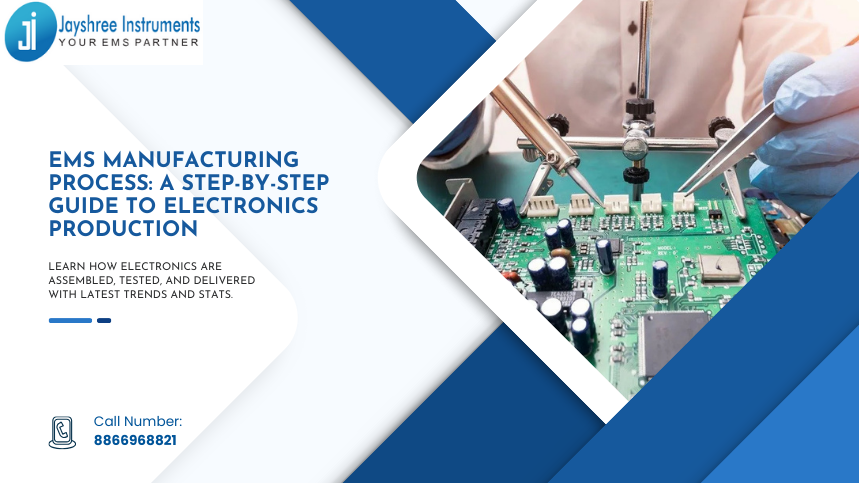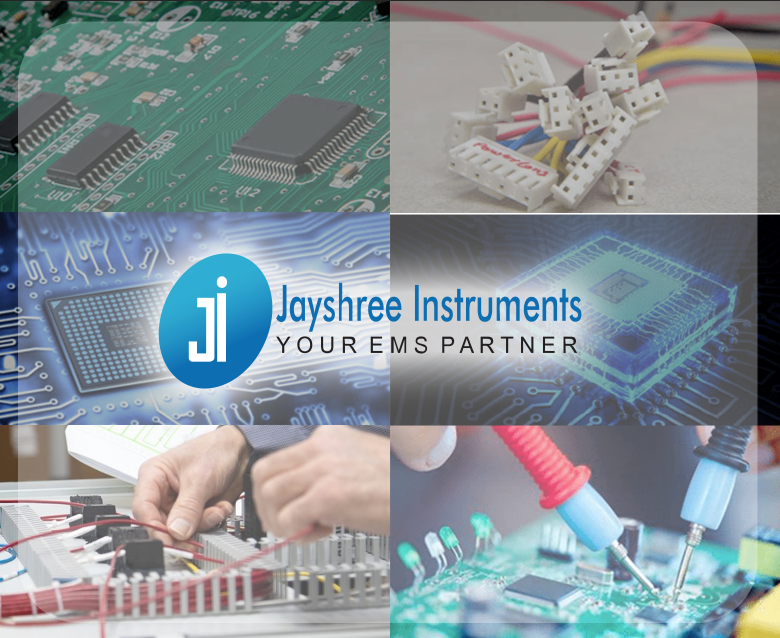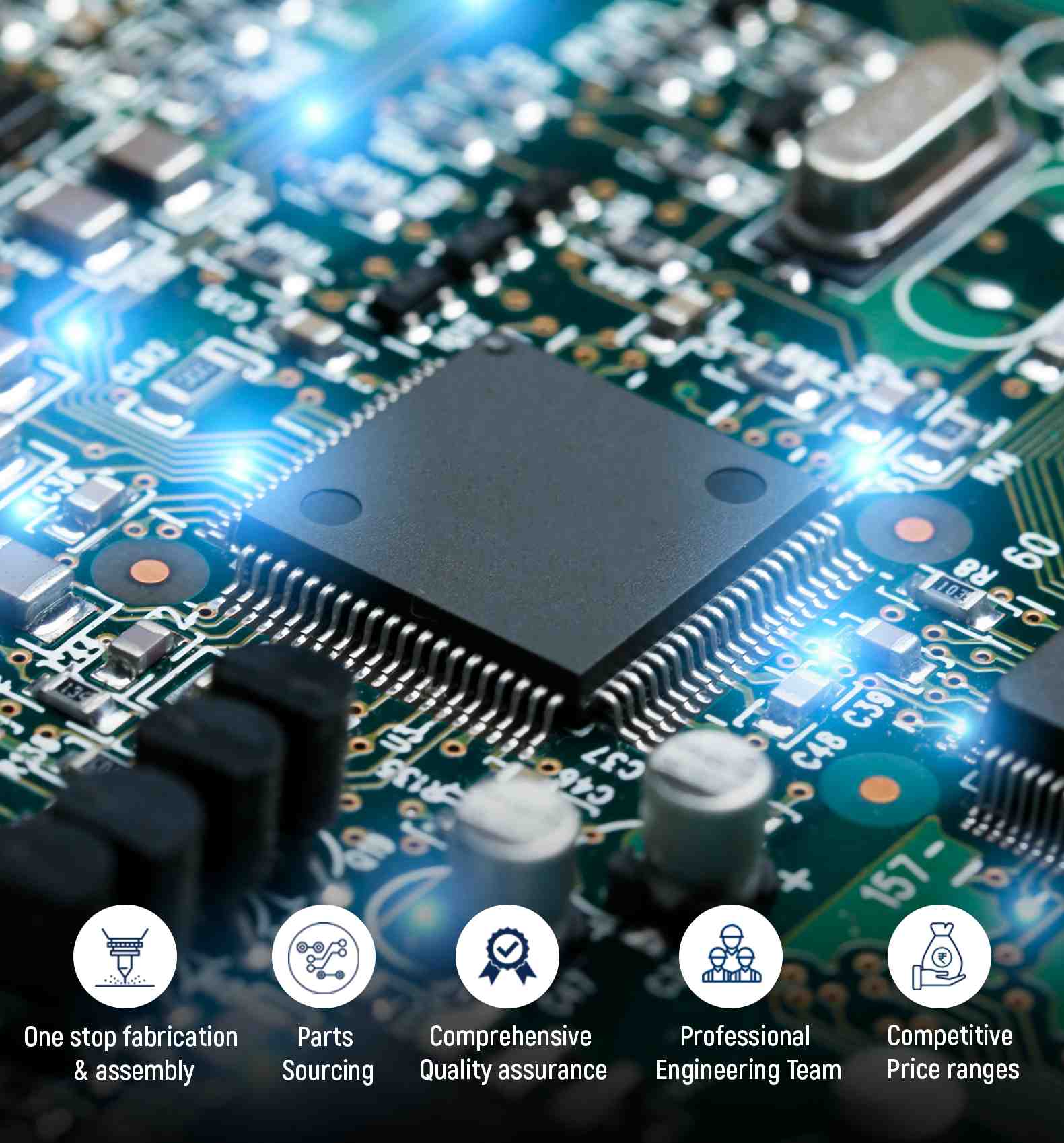Electronic devices power our modern lives — from smartphones to medical equipment. Behind this technological boom is a process called the EMS manufacturing process, a systematic method of designing, assembling, and testing electronic products.
If you’re sourcing from reliable EMS manufacturers in India or planning to understand how your product is built, this guide breaks down the EMS journey, from prototyping to final assembly.
1. What is EMS Manufacturing?
EMS (Electronics Manufacturing Services) refers to companies that design, manufacture, test, distribute, and provide return/repair services for electronic components and assemblies.
It is widely used across industries such as:
- Automotive
- Aerospace
- Medical devices
- Consumer electronics
- Industrial automation
2. Why EMS is Crucial for Electronics Today
- Allows businesses to focus on core R&D while outsourcing complex production.
- Reduces time-to-market.
- Offers high-precision and scalable production.
- Ensures compliance with global standards like ISO 9001, IPC-A-610, and RoHS.
Stat Check: As per a 2024 Deloitte report, India’s EMS industry is projected to reach USD 152 billion by 2025, growing at a CAGR of 30%.
3. EMS Manufacturing Process – Step-by-Step
a. Component Sourcing
Sourcing quality components is the foundation of EMS. Trusted vendors, inventory checks, and cost analysis are part of this step.
b. PCB Fabrication
Printed Circuit Boards (PCBs) are manufactured as per design specifications. Multilayer boards are fabricated using copper-clad laminates, etching, and plating processes.
c. SMT Assembly (Surface Mount Technology)
- Components are mounted directly onto the PCB surface.
- Machines like Pick-and-Place robots position micro components accurately.
- Reflow soldering is used to fix parts securely.
d. Through-Hole Technology (THT)
Larger components like capacitors and transformers are soldered manually or via wave soldering using THT.
e. Inspection & Testing
- AOI (Automated Optical Inspection) checks solder joints and alignment.
- ICT (In-Circuit Testing) ensures each part functions as intended.
- Functional testing mimics real-world conditions.
f. Box Build & Final Assembly
Includes enclosure manufacturing, cable harness integration, and full product assembly. If you’re seeking cable solutions, explore wire harness manufacturers in India for quality integration.
4. Industry Use Cases of EMS
| Industry | EMS Application |
| Automotive | ECU Boards, Lighting, Infotainment Systems |
| Healthcare | Patient Monitoring, Diagnostic Equipment |
| Telecom | Routers, Modems, Mobile Communication Devices |
| Defence | Communication Equipment, Radar Systems |
| Consumer Goods | Smart Watches, Home Appliances |
5. Advantages of EMS
- Reduced Cost: Bulk production and vendor partnerships lower overall costs.
- Scalability: Easily ramp up production based on demand.
- Quality Control: Stringent testing ensures low error rates.
- Expertise: Access to design engineers and advanced machinery.
6. Challenges in the EMS Process
- Supply chain disruptions (especially post-COVID).
- Rapid tech evolution creates constant upgrade pressure.
- Component shortages can delay production cycles.
- IP security and design protection issues.
7. EMS Trends and Future Scope (2025 and Beyond)
- Rise in IoT Devices: More EMS support needed for sensors, smart devices.
- Miniaturization: Complex PCB designs and micro components in high demand.
- Green Manufacturing: Focus on RoHS compliance and e-waste recycling.
- AI-Powered QA: Using AI to enhance error detection and predictive maintenance.
8. Choosing the Right EMS Partner in India
While evaluating EMS providers, look for:
- Certifications (ISO, RoHS)
- Design capabilities
- Testing infrastructure
- After-sales support
- On-time delivery record
India has rapidly become a preferred EMS hub due to skilled labor, cost efficiency, and government push under the ‘Make in India’ initiative.
9. Final Thoughts
Understanding the EMS manufacturing process helps businesses and product developers make smarter decisions. Whether you’re building a new consumer gadget or scaling an IoT solution, aligning with the right EMS partner ensures faster, high-quality, and cost-efficient production.
10. FAQs About EMS Manufacturing Process
Q1. What is the full form of EMS in manufacturing?
EMS stands for Electronics Manufacturing Services.
Q2. What are the key steps in the EMS manufacturing process?
It includes component sourcing, PCB fabrication, SMT/THT assembly, testing, and box build.
Q3. Why should startups choose EMS partners in India?
India offers cost-effective labor, skilled engineers, and fast-growing infrastructure for electronics manufacturing.
Q4. What’s the difference between SMT and THT in EMS?
SMT mounts components on the PCB surface, while THT involves inserting components into drilled holes.
Q5. How do EMS providers ensure quality control?
Via AOI, ICT, functional testing, and certifications like ISO 9001 and IPC-A-610.







Recent Comments